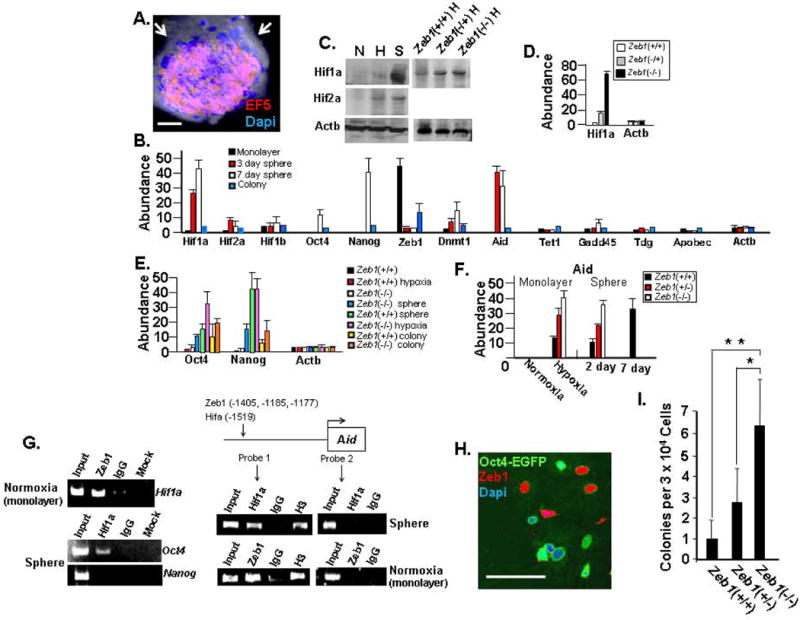Figure 5.

Interplay between Hif1a and Zeb1 regulates Aid, Oct4 and Dnmt1. A. After three days in suspension culture, MAF spheres were treated with the hypoxia sensor EF5 and immunostained (Material and methods). Note the hypoxic interior of the sphere. B. Real time PCR comparing mRNA levels in spheres and colonies of sphere-derived SP cells. C. Western blot showing the effects of sphere formation, hypoxia and Zeb1 on Hif expression. “N” indicates normoxic monalayer culture, “H” Hypoxic monolayer culture, and “S” three-day-old sphere. D. Real time PCR showing the effect of Zeb1 mutation on Hif1a mRNA in MEFs. E. Real time PCR showing expression of Oct4 and Nanog mRNA. F. Real time PCR showing the effects of hypoxia, sphere formation and Zeb1 on Aid mRNA expression. G. ChIP assays showing binding of Zeb1 and Hif1a to promoters. The location of Zeb1and Hif binding sites in the Aid promoter is shown along with the location of the two probes used in the assays. “IgG” indicates control normal serum and “Mock” indicates no antibodies. H. Co-immunostaining of cells dissociated spheres after adhesion to Matrigel for Oct4 and Zeb1. I. The three indicated MEF genotypes at P1 were used for spheres formation, and then after 7 days in suspension spheres were allowed to adhere to Matrigel and colony formation was assessed two weeks later. The 30,000 cells used for the assays gave rise to an average of 8.5±3.6 spheres. The bar is 50 μm in Panels A, 20 μm in Panel H.
